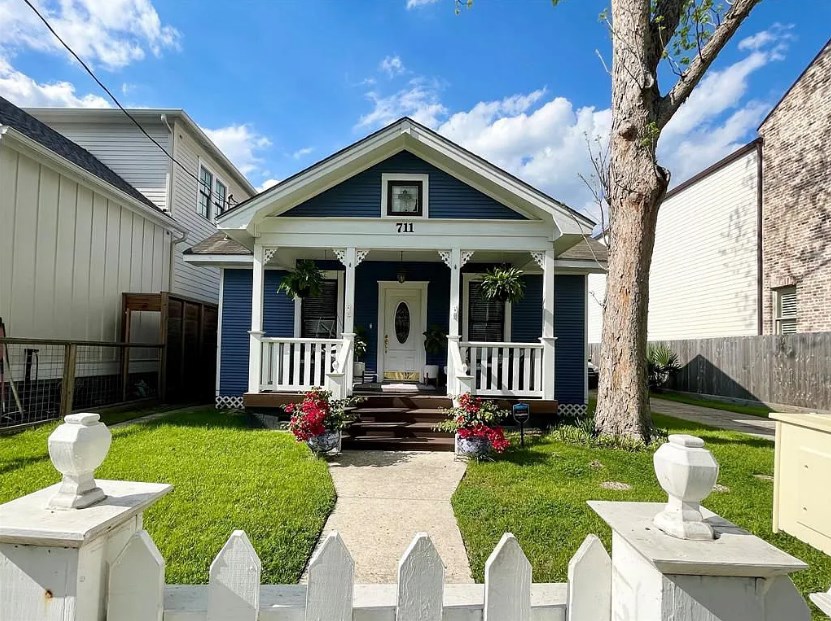 House Rentals – Floor Plans: 3 Beds, 2 Bath, 988 sqft, $2,500/mo. Location: 711 E 10th 1/2 St, Houston, TX 77008. Contact Property: (713) 304-2564. Amenities: Parking: 0 spaces, Heating: Natural Gas, Pets: No Pets, Building Type: Single Family. Schools: Natural Gas, Heights High School, Harvard Elementary School.
House Rentals – Floor Plans: 3 Beds, 2 Bath, 988 sqft, $2,500/mo. Location: 711 E 10th 1/2 St, Houston, TX 77008. Contact Property: (713) 304-2564. Amenities: Parking: 0 spaces, Heating: Natural Gas, Pets: No Pets, Building Type: Single Family. Schools: Natural Gas, Heights High School, Harvard Elementary School.
House rentals are a popular choice for individuals and families seeking a place to call home without the commitment of purchasing a property. Renting a house offers flexibility, affordability, and convenience, making it an attractive option for many. In this comprehensive guide to house rentals, we will explore the benefits of renting a house, the types of houses available for rent, the rental process, tips for finding the perfect rental, and important considerations for a successful tenancy.
Benefits of House Rentals
Renting a house comes with several advantages that cater to diverse lifestyles and preferences. Some key benefits of house rentals include:
- Flexibility: House rentals offer more flexibility in terms of lease duration, allowing tenants to choose short-term or long-term contracts based on their needs.
- Space and Privacy: Houses generally provide more living space and privacy compared to apartments or townhouses. Renting a house allows tenants to enjoy a backyard, garage, and more room for personalization.
- Family-Friendly: Houses are often suitable for families with children or pets, as they offer a spacious and secure environment.
- Amenities: Some house rentals include amenities such as private swimming pools, gardens, and outdoor entertainment areas, providing a luxurious living experience.
- Community Living: In certain cases, house rentals are situated in neighborhoods or gated communities, offering a strong sense of community and shared facilities.
Types of Houses for Rent
House rentals come in various types, each catering to different lifestyles and preferences. Some common types of houses for rent include:
- Single-Family Homes: Detached houses designed for a single household, offering full privacy and autonomy.
- Townhouses: Attached houses that share walls with neighboring units, typically offering a more affordable option than single-family homes.
- Duplexes: Houses divided into two separate living units, often with shared walls.
- Bungalows: Single-story houses with a low, often one-level design, suitable for those seeking single-floor living.
- Cottages: Smaller houses, often with cozy and charming designs, popular for vacation rentals or as secondary dwellings.
The Rental Process
Renting a house involves several essential steps, from finding the right property to moving in. Here’s an overview of the rental process:
- Property Search: Start by searching for available house rentals in your desired location. Use online platforms, local classifieds, real estate websites, or work with a real estate agent to find suitable options.
- Property Visit: Schedule a visit to the houses you are interested in. Inspect the property thoroughly, checking for any damages or issues.
- Rental Application: Once you’ve selected a house, complete the rental application provided by the landlord. This may include personal information, references, employment verification, and consent for a background check.
- Lease Agreement: If your application is approved, the landlord will provide you with a lease agreement. Carefully review the terms, including rent amount, lease duration, security deposit, and maintenance responsibilities.
- Security Deposit and Rent: Pay the security deposit and the first month’s rent before moving in.
- Move-In Inspection: Conduct a move-in inspection with the landlord, documenting the condition of the property. Take photos or videos to protect your security deposit when moving out.
- Monthly Rent Payment: Pay the rent on time each month as per the lease agreement. Many landlords offer online payment options for convenience.
- Maintenance and Repairs: Report any maintenance or repair issues to the landlord promptly. The landlord is responsible for ensuring that the property is well-maintained and habitable.
- Renewal or Move-Out: At the end of the lease term, you can choose to renew the lease or move out. Give the required notice to the landlord if you decide to move out.
- Move-Out Inspection: Conduct a move-out inspection with the landlord, ensuring that the property is in good condition. Upon approval, you may receive your security deposit back, minus any necessary deductions.
Tips for Finding the Perfect Rental
Finding the ideal house rental requires careful consideration and research. Here are some helpful tips to assist you in your search:
- Set a Budget: Determine your budget for rent and other associated expenses, ensuring you can comfortably afford the rental.
- Location: Consider the location’s proximity to your workplace, schools, shopping centers, and other essential amenities.
- Amenities and Features: List the must-have amenities and features you desire in a rental property, such as a backyard, garage, or specific appliances.
- Safety and Security: Research the safety and security of the neighborhood, checking crime rates and seeking local insights.
- Read Reviews: If the rental property is part of a community or managed by a property management company, read online reviews to gain insights from previous tenants.
- Ask Questions: Don’t hesitate to ask the landlord questions about the property, lease terms, and any specific policies.
- Negotiation: Negotiate lease terms, rent price, or other terms with the landlord if needed. Being respectful and reasonable can lead to favorable outcomes.
- Understand the Lease Agreement: Carefully read and understand all terms and conditions of the lease agreement before signing.
Considerations for a Successful Tenancy
To ensure a successful tenancy and a positive landlord-tenant relationship, keep the following considerations in mind:
- Respect Property Rules: Adhere to the rules and policies outlined in the lease agreement and those set by the landlord or community association.
- Prompt Communication: Maintain open and prompt communication with the landlord regarding any issues or concerns that arise during your tenancy.
- Routine Maintenance: Take care of routine maintenance tasks, such as changing air filters and light bulbs, to keep the property in good condition.
- Seek Approval for Changes: If you wish to make alterations or improvements to the property, seek approval from the landlord before proceeding.
- Be a Good Neighbor: Respect your neighbors’ privacy and follow community guidelines to foster a harmonious living environment.
- Report Issues Promptly: Inform the landlord of any maintenance or repair issues promptly to prevent further damage.
- Give Notice: Provide the required notice period to the landlord if you plan to move out at the end of the lease term.
Conclusion
House rentals offer flexibility, space, and a wide range of amenities for individuals and families seeking a place to call home without the commitment of purchasing a property. Whether you’re looking for a single-family home, a townhouse, or a charming cottage, there are various types of houses available for rent to suit your preferences. The rental process involves searching for suitable properties, applying, signing a lease agreement, and moving in. To find the perfect rental, set a budget, consider the location and amenities, read reviews, and ask questions to the landlord. Throughout your tenancy, respect property rules, communicate openly with the landlord, and maintain the property to ensure a successful and enjoyable rental experience.
 Houses for Rent Finding info about Houses for rent
Houses for Rent Finding info about Houses for rent




